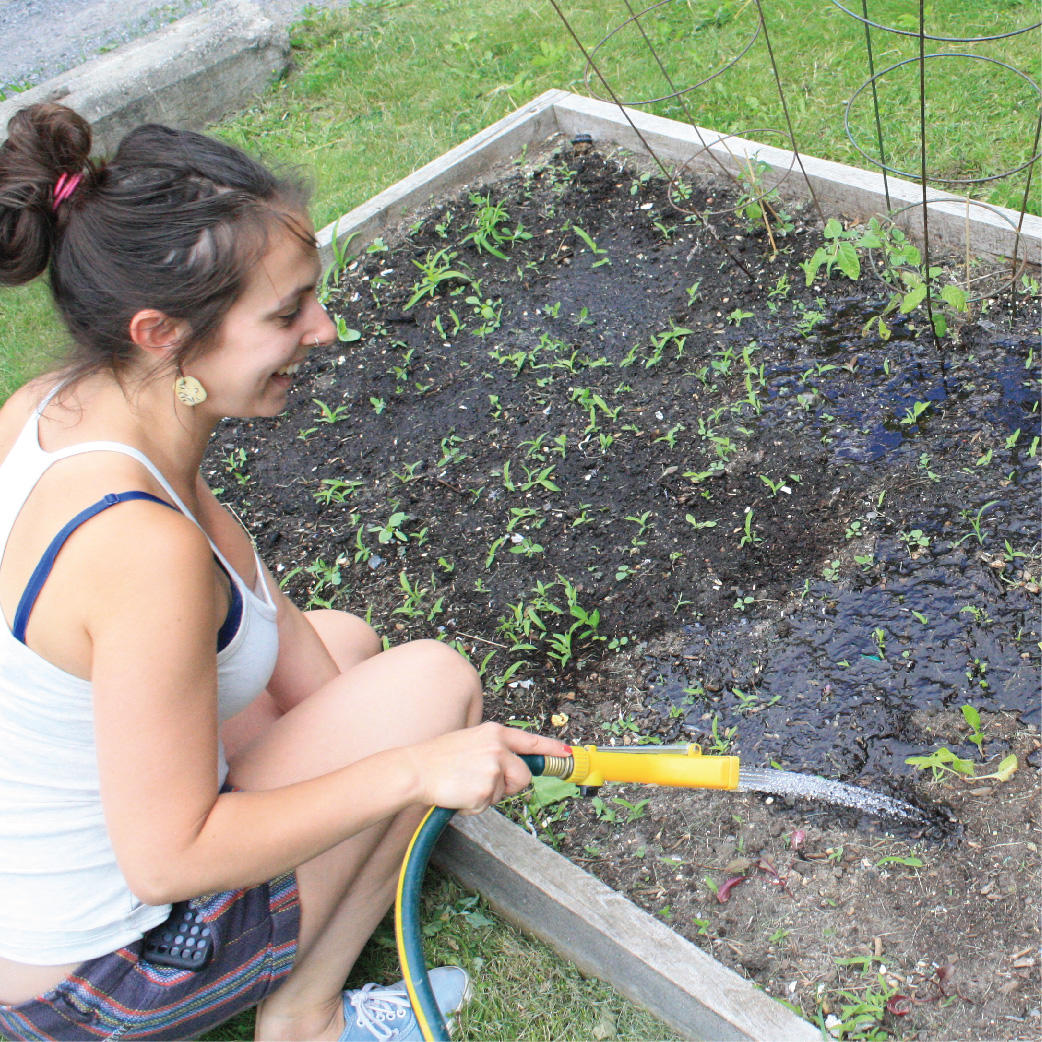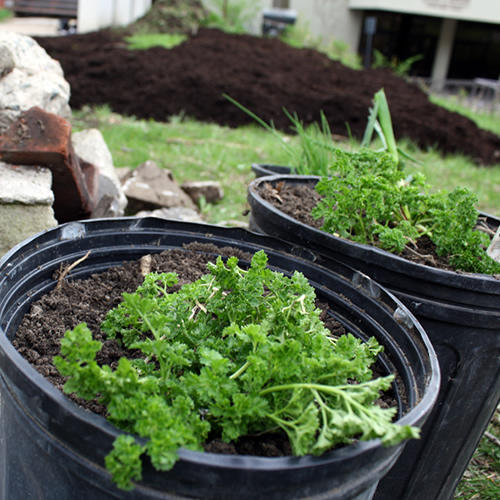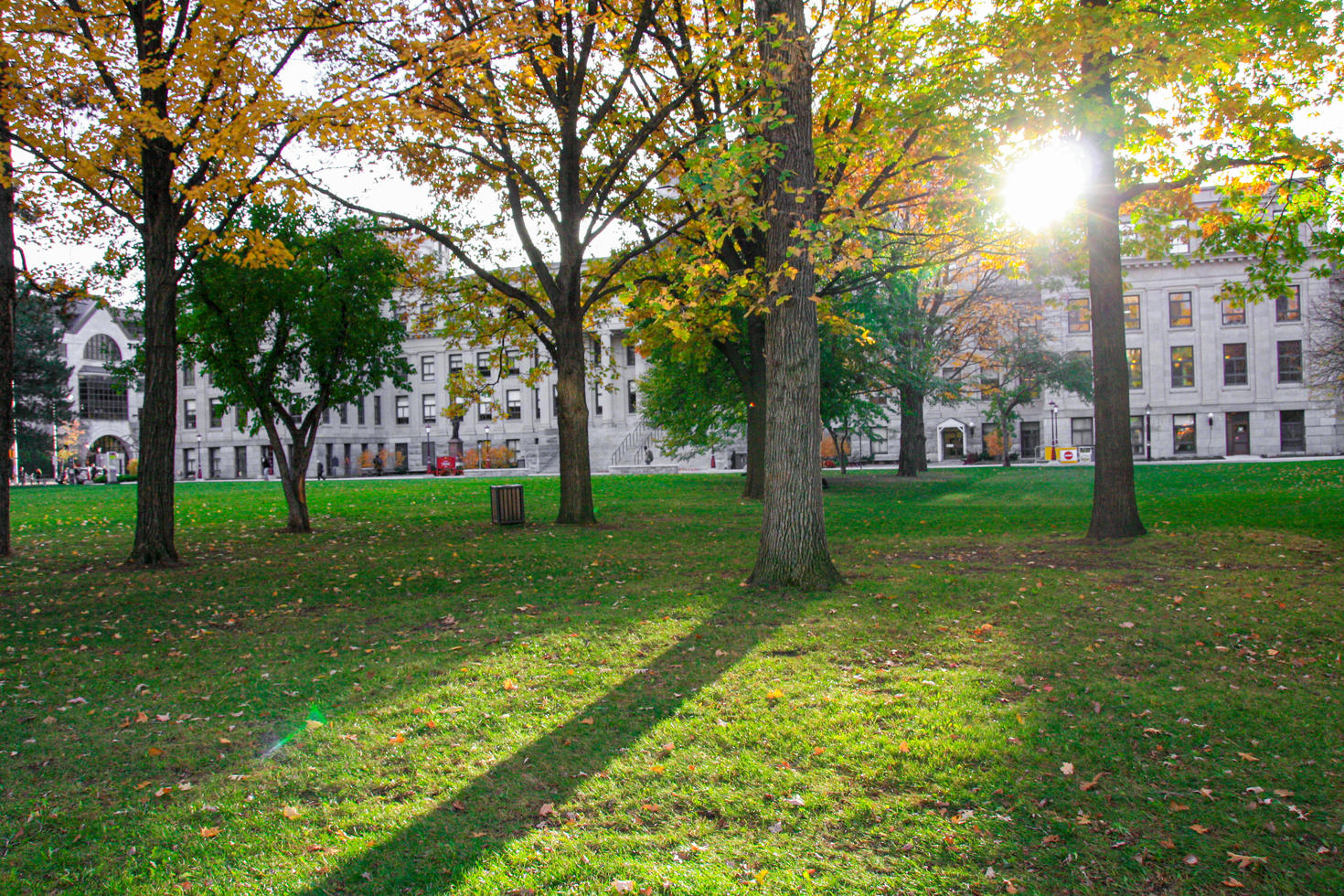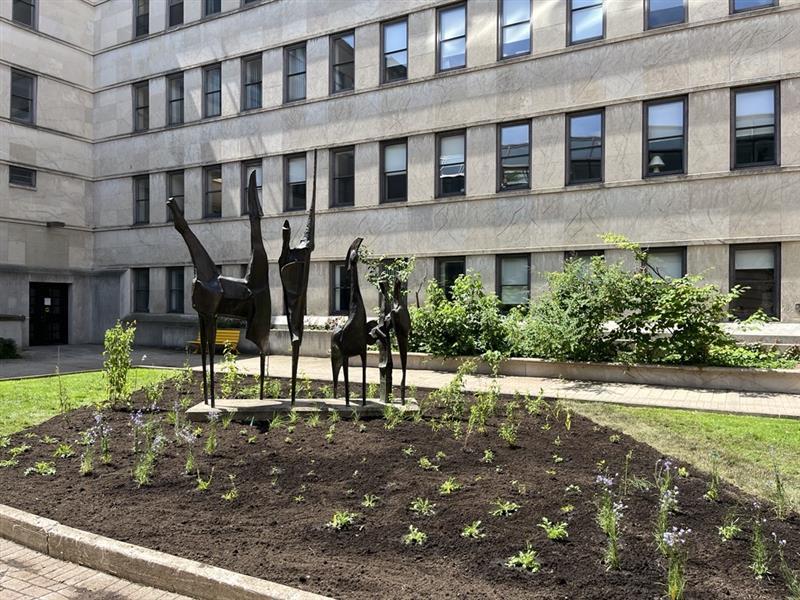- In 2017, the number of community garden plots increased to over 50 plots on campus.
- Four buildings on campus have achieved LEED Gold certification, one has achieved LEED Silver certification and another building on campus is targeting LEED certification. This represents approximately 15% of the building space on campus.
- Facilities has changed their building standards so that all roofs on campus that meet the requirements, must be a green roof.

Buildings and green spaces

Vision for buildings and green spaces
Buildings and green space tips

Here are a few tips for how you can enjoy the green spaces on campus and help us improve the quality of our green spaces:
Don’t Litter
Tossing your waste on the ground creates pollution for humans and animals.
Take Advantage of the Space
If green space on campus is important to you, engage with it! The more the space is used, the more it will be incorporated into campus design and culture. So bring those textbooks outside and take in some fresh air.
Ask for More Plants
Being close to plants when you study can promote calmness and wellbeing. You can book space inside the plant therapy room of the Wellness Lounge to get closer to plants indoors or you can send us requests to increase the number of plants in study spaces.
For more tips, please check out our Sustainability Tips page.
Progress
LEED Certified Buildings
The University of Ottawa builds all its major buildings to a LEED Silver certification standard.
What is LEED?
LEED stands for Leadership in Energy and Environmental Design. LEED certification, the international mark of excellence for green building, provides independent, third-party verification that a building was designed and built using strategies aimed at achieving high performance in key areas of human and environmental health:
- sustainable site development
- water conservation
- energy efficiency
- materials selection
- indoor environmental quality
Water savings
Throughout our LEED-certified buildings, efficient water fixtures are used to reduce water consumption. This includes all indoor appliances, such as low-flow toilets and sinks, and lab equipment. Exterior water use is also minimized, for example, through water-efficient landscaping, little to no irrigation and selection of plant species for drought tolerance.
Energy efficiency
To reduce the total amount of energy used by our LEED-certified buildings, we’ve installed energy-efficient equipment, including lighting and computers. Special care has been taken to make sure that building insulation is top notch, with no thermal breaks.
LEED Buildings on Campus
- Advanced Research Complex (ARC): LEED Gold
- Faculty of Social Sciences (FSS): LEED Gold
- Learning Crossroads (CRX): LEED Silver
- STEM (STM): LEED Gold
- Health Sciences Building (Lees): LEED Platinum, discover the sustainability features of the building
- Advanced Medical Research Centre: targeting LEED Gold
A plan to green the campus
One of the “big moves” identified in Facilities’ Campus Master Plan, our framework for the evolution of the University, is to green it.
More trees and landscaped open spaces will soften the built environment and create a more attractive campus; provide places for relaxation, gathering and learning; help to manage stormwater and mitigate the impacts of climate change; and generally support a healthy campus and healthy lifestyles. New landscaping initiatives implemented with every new development or renovation will ensure that the character and experience of the campus is gradually enhanced and extended to all areas of the campus.
A number of other landscape projects have been identified in the Plan, some of them to be implemented on their own and others associated with new buildings or infrastructure.

Community Gardens
There are over 50 community garden plots available on campus.

Living Wall
The FSS Building houses one of North America’s largest biofilter walls. Our six story living wall is made up of 8000 plants of 12 different species. The biofilter living wall reduces the amount of air intake and lowers heating and cooling costs. The unit can even render the building’s humidifier unnecessary and lower concentrations of dust, fungal spores, and airborne bacteria as well.

Green Roofs
The University of Ottawa has eight buildings with green roofs. These roofs help reduce storm water run-off, cool down buildings, and provide shelter for animals and insects. Green roofs also help reduce the urban heat island effect. There are currently almost 4,218 m2 of green roof space on campus.
- Colonel By - 1,719 m2
- Henderson residence - 135 m2
- Learning Crossroads - 331 m2
- FSS - 963 m2
- Montpetit - 273 m2
- University Centre - 1,087 m2
- Perez - 404 m2
- Tabaret - 236 m2

Campus Green Spaces
The green spaces on campus offer places for the campus community to come gather, engage in recreation, relax and lounge, as well as providing essential ecosystem services.
- Tabaret Lawn
- Ottawa-Citizen Terrace
- Simard-Hamelin Courtyard
- Thompson Park
- UCU Upper Terrace
- Spirit garden (Fauteux Terrace)
- University Square
- FSS Indigenous Garden
- Jock Turcot University Centre Park
- Montpetit Green Roof
- Cenovus Courtyard
- Marion Square
- Colonel By Green Roof
- 200 Lees Park

Drought tolerant plants
The plants used on campus are selected for a variety of features which make them favourable (including for drought tolerance).
- Native species
- Pollinator-friendly
- Fruit-bearing
- Indigenous significance
Pollinator gardens

Simard-Hamelin
A vibrant 75 m² pollinator garden graces the Simard–Hamelin courtyard, rejuvenating what was once an unremarkable stretch of turfgrass. This action is in line with the Nature Positive Pledge as well as its commitment to restoring green spaces for biodiversity and enhanced ecosystem services.
Developed in collaboration with the Department of Geography, Environment and Geomatics, this garden encircles Bruce Garner’s bronze horse sculpture, symbolizing transformation.
Geography department professors, employees and family members gathered to plant the garden in July 2025, in memory of two beloved colleagues, professors Eric Crighton and Kenza Benali, both of whom passed away in 2024.
The garden features twelve species native to the Ottawa region:
- Campanula rotundifolia
- Geum triflorum
- Helianthus divaricatus
- Heliopsis helianthoides
- Monarda fistuleuse
- Monarda punctata
- Penstemon digitalis
- Penstemon hirsutus
- Schizachyrium scoparium
- Symphyotrichum novae-angliae
- Verbena simplex
- Zizia aurea

